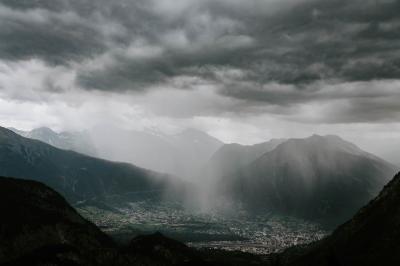Future Sharpening of Winter Storms in the Western United States
Projections show winter storms in the Western U.S. intensifying under warming, but changes in their characteristics remain largely unknown. Using high-resolution climate simulations over the Western U.S., scientists identified storm events and analyzed their future changes. They revealed that, on average, future storms will cover more space and have an increased intensity. These contribute to higher precipitation volumes and an increased risk of widespread flooding. However, a larger increase in precipitation intensity near the storm center, known as storm sharpening, will also increase the risk of flash flooding, challenging regional water resource management and disaster preparation.
Winter storms provide the water needed to support a wide range of human activities in the Western U.S., but are also responsible for billion-dollar economic losses. Water management infrastructure design in the region has relied on quantifications of storm characteristics, assuming that they stay the same over time. This study found that storm characteristics, such as storm spatial coverage and the mean and peak intensities of precipitation, are altered by global warming. These have implications for future flood risk and the design of resilient infrastructure. This study also demonstrates the importance of storm-resolving modeling for improving scientific understanding of how global warming changes the spatial structure of storms that produce heavy precipitation.
Researchers analyzed two sets of regional storm-resolving simulations over the Western U.S. for both historical (1981-2010) and future (2041-2070) periods under a high emissions scenario. The researchers developed a method to identify storm events as spatially connected objects based on daily precipitation data. They found that the storm-resolving simulation of the historical period captures realistic storm features that closely match those derived from observations.
By analyzing the top 20% of storm events based on total precipitation in the future versus historical periods, researchers revealed that heavy storms in the Western U.S. will exhibit larger spatial coverage (+22%) and higher mean intensity (+9%) by mid-century. These changes cause a 31% increase in total precipitation volume from individual storms, leading to a larger fractional contribution of heavy storms to total winter precipitation. Importantly, the storm peak intensity increases at 19%, reflecting a larger increase in precipitation near the storm center than in the rest of the storm. The storm sharpening, increase in storm area, and increase in total precipitation volume pose new challenges to water infrastructure planning and operation. They increase the risk of flash floods in small watersheds and the risk of widespread floods in large watersheds in the future. Incorporating these projected storm changes in infrastructure design may improve water management practices and increase future societal resilience.

